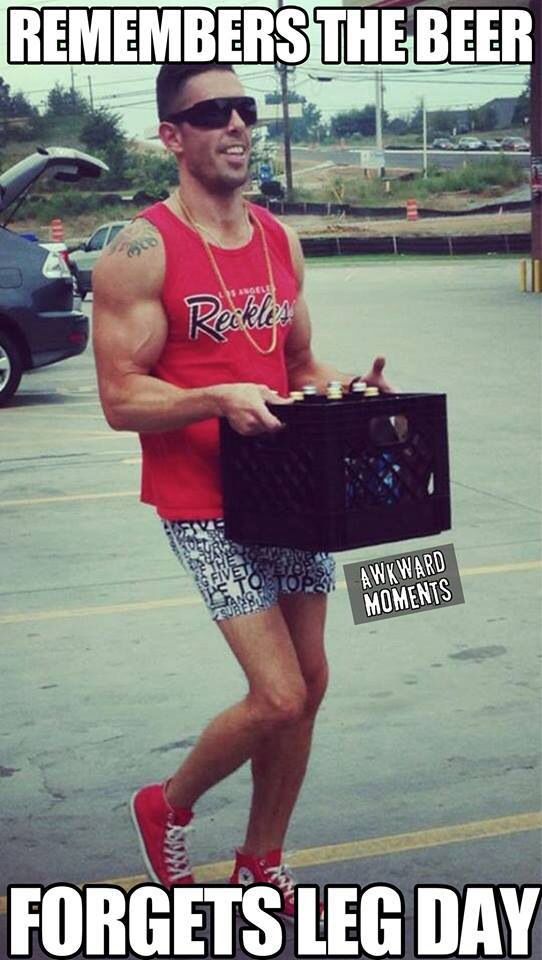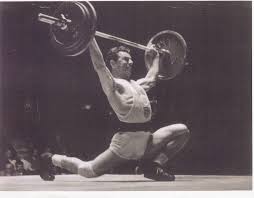Like most guys starting out in the gym, I did plenty of mirror muscle work. It was a steady diet of biceps curls, triceps extensions, bench presses and shoulder raises. Any muscle I didn’t see or didn’t care about, didn’t get trained.
Like legs.
I covered them up with baggy pants and no one could tell the difference anyway. However, big arms is a different matter. You’d show them off in a heartbeat. Because if you didn’t know, the big arm skinny leg look never goes out of style. 😊

And that’s all fine and dandy when you’re a young whipper snapper. You’re less likely to have any health dramas or any real complications from an unbalanced exercise routine or no formal routine at all.
Except for when your friends put you in a meme and your feelings get hurt. However, all you would’ve had to do is walk over to the squat rack occasionally.
Anyhow, when you’re an adult approaching 50 (like yours truly) or you’ve blasted past this milestone, skipping leg day or exercise entirely for long periods is bad news because;
- You’ll lose muscle and gain fat
- Health complications (heart disease, diabetes, high cholesterol and blood pressure) become more of a factor
- Your bones get weaker
- There’s a decline in your peak aerobic capacity (Cardio)
And that’s just for starters. When you move less and less often, your overall health suffers.
If you’re over 40, now’s the time to train like an adult. And maybe act like one too occasionally.
Your quality of life depends on it.
Training considerations
There’s nothing magical about exercising when you’re an adult over 40 but there are a few considerations.
- You’re no spring chicken but you’re not ‘old’ either. You’re in-between. All of the wild and crazy stuff you used to get away with may come back to bite you on the ass if done now. You might have one more injury, but do you have one more recovery?
- The responsibilities of being an adult, kids, bills, work etc. creates a certain amount of stress. This means being careful about adding to it.
- With the double-edged sword of stress and responsibilities, you have less time and less energy to devote to fitness. Choose your exercise wisely.
- With exercise (probably) being low on your priority list, you need to carve out time in your busy schedule, even if it’s 10 -20 minutes.
- Having a few more miles on the odometer means being more aware of when something hurts and not ignoring. Never ever train through pain. Train around it. But never through it.
The following is some of the grown-up things you need to be doing with your limited time to train.
Be a kid on your own time. 😊
Cardio
There’s plenty of evidence that suggests regular physical activity helps to reduce heart disease and several other chronic conditions such as stress. (1)
Studies have found 20-30 minutes of aerobic exercise helps to cut stress and clear your mind. All you do is strap on your shoes and go for a walk, run, jog, bike or row and the stress (and fat) will melt away.
Here are some examples.
10/10/10 minutes
Spend 10 minutes on the bike.
10 minutes on the treadmill (use the incline function for intensity) and keep the speed
around 3-3.5 mph.
10 minutes on the rowing machine.
Any cardio machine will do. Just choose three different modes and work at a pace where you’re not completely out of breath.
3-minute Aerobic intervals (any mode you like)
Warm up for 4 minutes at an easy pace.
Perform a 3-minute aerobic interval working at a pace where you’re slightly out of breath.
Follow this with active recovery for 3 minutes of low intensity. Repeat the above sequence 3 times and then cool down for 3 minutes. Try to add one interval every two weeks.
Higher intensity interval training
Warm up for 4 minutes at an easy pace on any cardio machine you like.
Then choose a work/rest from the choices below. The shorter the work interval the more intense it is and vice versa.
10 seconds work/20 seconds rest
20 seconds work/ 40 seconds rest
30 seconds work/ 60 seconds of rest
Do anywhere from 6-8 work rest intervals and then cool down for 5 minutes.
You can print these trainings here.
Strength training
Strength training starts with fundamental human movements. The movements you perform daily, should also be done when you’re training, to make your life in and outside of the gym easier. These movements are
- Squats
- Hinges
- Pushes
- Pulls
- Carries
- Groundwork
And click here to learn how to put all these movements into your own customized exercise routine.
However, when time is really of the essence, here are some examples of time-saving trainings (gym and home) that I use when time is limited.
1A. Push ups 10 reps (Can be done on the knees or on an inclined surface)
1C. Kettle bell swings -20 reps
Rest one minute after each circuit and do five circuits.
1A. Dumbbell shoulder press 10 reps
1B. Dumbbell bent over row 10 reps
Rest one minute after each circuit and do five circuits.
1A. Push ups – 10 reps
1B. Side planks- 15 seconds each side
Rest one minute after each circuit and do five circuits.
Or try this.
One lift per day
When you truly haven’t got the time or the energy for a formal training routine, try narrowing your focus even further by doing just one lift per day.
Trust me, it’s not for the faint of heart. Back in the 50’s and 60’s some Olympic lifters trained like this and they turned out just fine.

I could wax poetic on sets, reps and guidelines but you’re better off reading this and then putting it into action. He knows what he’s talking about.
Stretching/Flexibility/Recovery
The more ‘adult’ you get, the more ligaments and tendons that support your muscles and bones, get thicker, dehydrated and less resistant to stretching.
Ever felt stiff in the morning?
Harder to get going?
Now you know the reason. Besides getting old. 🙂
Furthermore, there are muscles that are ‘on’ consistently to hold you upright, hopefully in good posture. These are called tonic muscles.
Tonic muscles are anti-gravity muscles involved in repetitive activities which get tighter as you get older.
These muscles are
Pectoral Muscle (Chest)
Rectus Femoris (Quads)
Hip adductors (inner thighs)
It’s important to find the time to stretch these muscles to support good posture and balance.
Note- Hold these stretches (in the videos) for at least 1 minute at a time because ligaments/tendons are less resistant to stretching.
Go for a walk for recovery and stress reduction
There are numerous health benefits to walking. But a hidden benefit of walking that isn’t often mentioned is it reinforces our natural human contralateral (opposite arm opposite leg) pattern of movement.
The contralateral act of walking activates the left and right hemispheres of the brain which helps clear your head.
Furthermore, walking is a great stress reliever because it stimulates the brain to release serotonin and endorphins, which help you feel better physically and mentally.
Please try to find 10-20 minutes a day to walk for stress reduction and recovery purposes.
Putting it all together
With all the options above, try to do one of these things per day. Try not to stress about which one, just choose the one that you have the time and energy for.
Here are your ‘adult’ guidelines on how to use these trainings
- Strength training- 2-3 times a week
- Cardio interval training 2 times per week. (If fat loss is your goal add 1 or 2 sessions)
- Walking- Every day
- Stretching 3 or more times a week. (Do this after a strength or cardio training session)
Wrapping up
You haven’t got any time to muck around when you’re an adult. Exercise is the original fountain of youth that will improve the way you look and improve your quality of life.
If you need help putting together an exercise routine that best suits your lifestyle, please contact me here.
2 Comments
Stress Free Holiday Exercise Plan - Balance Guy Training
[…] After all you’re an adult. You got this. […]
Make A Commitment - Balance Guy Training
[…] your adult life is anything like mine, you have several commitments. You have a job, bills to pay, kids to […]